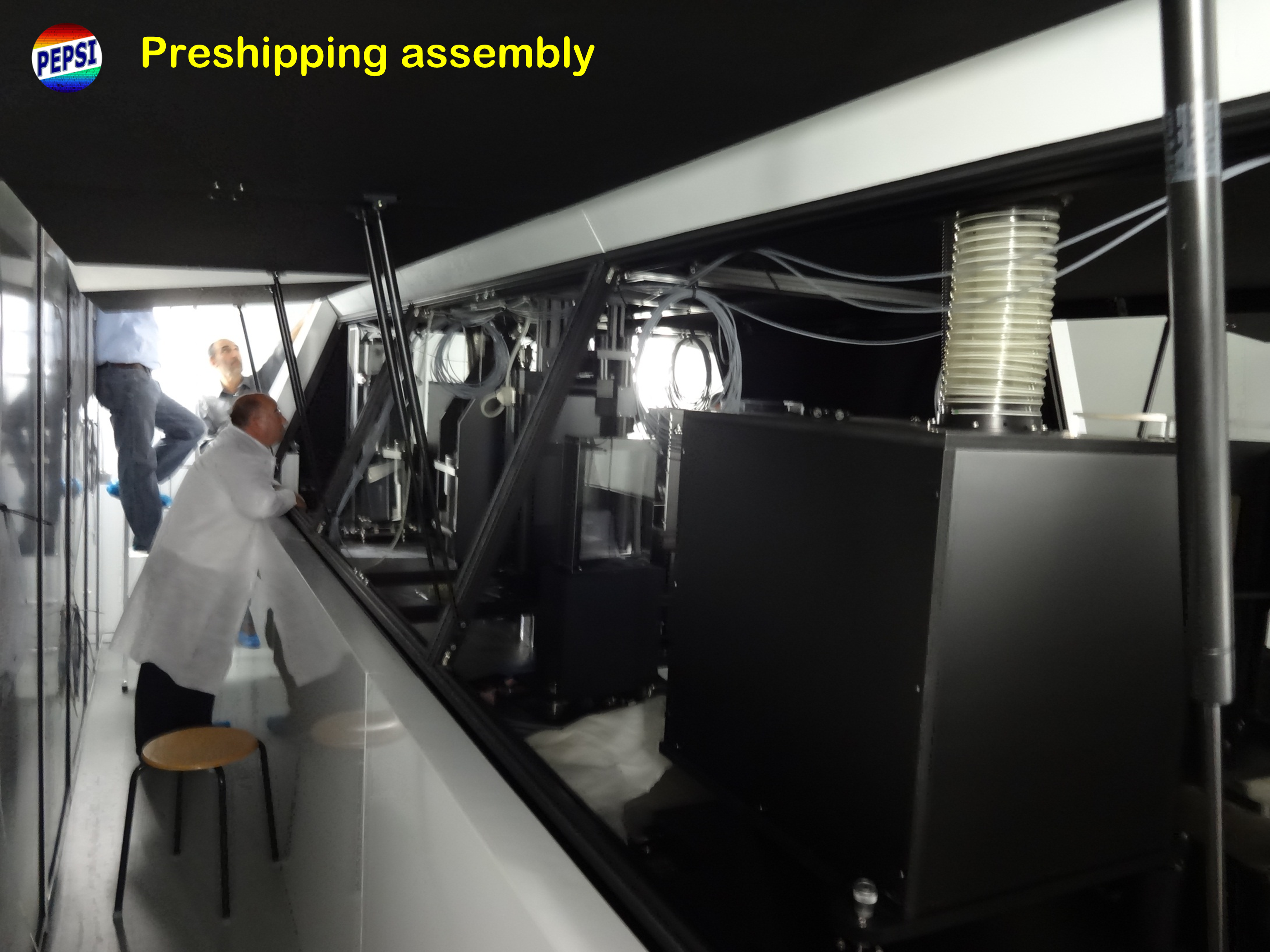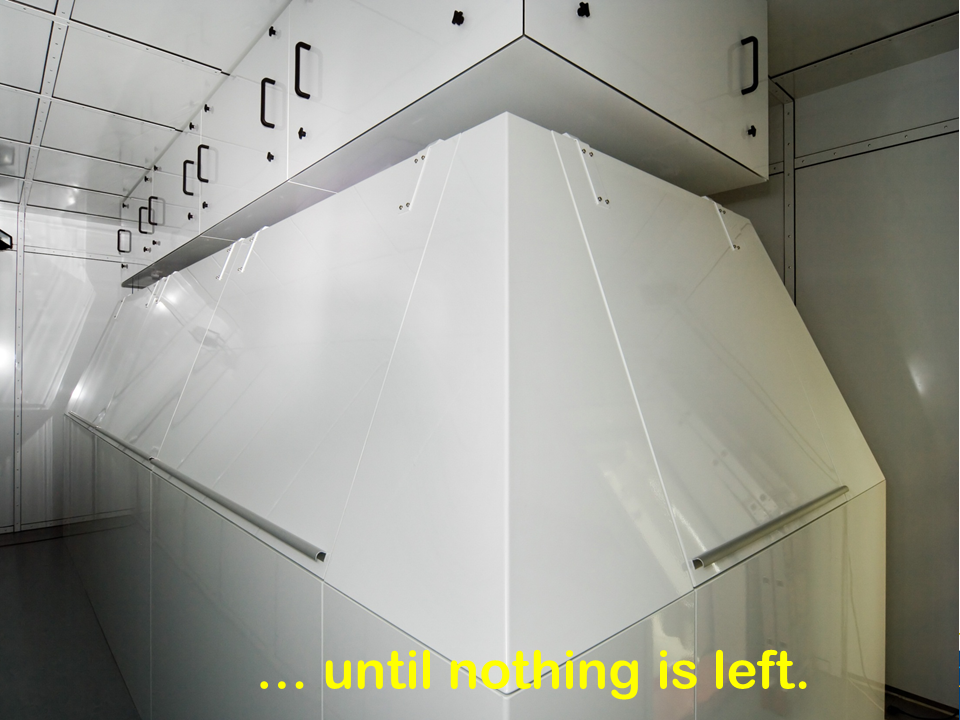The spectrograph is located on a 2m x 6m optical table in the telescope pier, inside a pressure- and temperature-stabilized chamber. It receives light from the polarimeters and permanent focus stations via 44m long fibres, coupled with image slicers. The polarimetric mode provides a resolution of 130.000, while resolutions of 50.000, 130.000 and 250.000 can be obtained with the permanent focus stations through a choice of different fibres. A white-pupil two-arm design with a 200mm main beam diameter, utilizing the largest available monolithic echelle grating and VPH grisms for cross dispersion, is employed. The collimators are nominally off-axis Maksutov systems, allowing for a beam diameter reduction to 125mm in the blue and red transfer collimator arms. The two spectrograph cameras are equipped with a single monolithic 10k x 10k CCD from STA (STA 1600LN). For each spectral order, four spectra are recorded, i.e. two polarization states or object/sky for each telescope. The entire spectral range from 383 to 912 nm can be covered in three exposures.
Overall spectrograph characteristics
| Fibre Diam. (μm) | Sky Diam. (arcsec) | # of slices (n) | Slicer Width (μm) | Slicer Width (arcsec) | R = λ/Δλ | R Sampl. (pix) |
|---|---|---|---|---|---|---|
| 100 | 0.74 | 7 | 70 | 0.11 | 250,000 | 2.0 |
| 200 | 1.5 | 5 | 175 | 0.30 | 130,000 | 4.2 |
| 300 | 2.3 | 3 | 500 | 0.77 | 50,000 | 12.1 |




